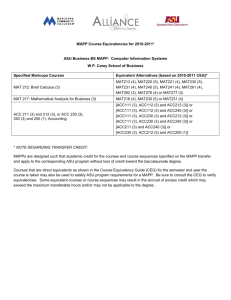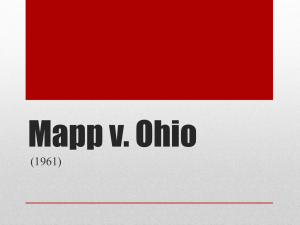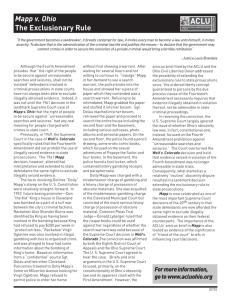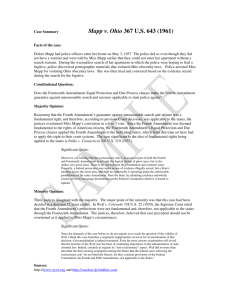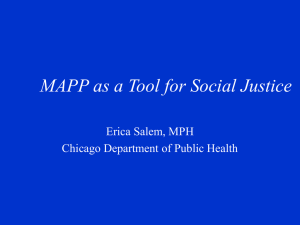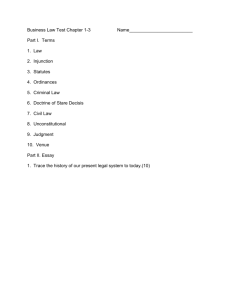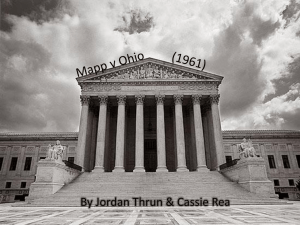Mapp V. Ohio (1961) - Binghamton City Schools
advertisement
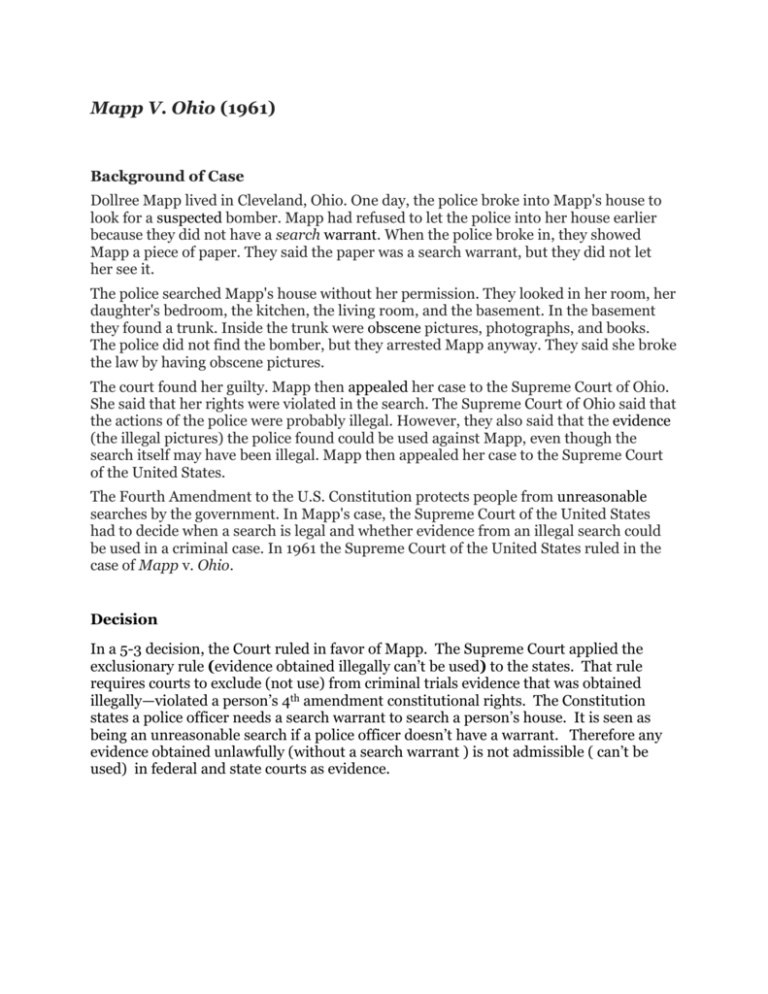
Mapp V. Ohio (1961) Background of Case Dollree Mapp lived in Cleveland, Ohio. One day, the police broke into Mapp's house to look for a suspected bomber. Mapp had refused to let the police into her house earlier because they did not have a search warrant. When the police broke in, they showed Mapp a piece of paper. They said the paper was a search warrant, but they did not let her see it. The police searched Mapp's house without her permission. They looked in her room, her daughter's bedroom, the kitchen, the living room, and the basement. In the basement they found a trunk. Inside the trunk were obscene pictures, photographs, and books. The police did not find the bomber, but they arrested Mapp anyway. They said she broke the law by having obscene pictures. The court found her guilty. Mapp then appealed her case to the Supreme Court of Ohio. She said that her rights were violated in the search. The Supreme Court of Ohio said that the actions of the police were probably illegal. However, they also said that the evidence (the illegal pictures) the police found could be used against Mapp, even though the search itself may have been illegal. Mapp then appealed her case to the Supreme Court of the United States. The Fourth Amendment to the U.S. Constitution protects people from unreasonable searches by the government. In Mapp's case, the Supreme Court of the United States had to decide when a search is legal and whether evidence from an illegal search could be used in a criminal case. In 1961 the Supreme Court of the United States ruled in the case of Mapp v. Ohio. Decision In a 5-3 decision, the Court ruled in favor of Mapp. The Supreme Court applied the exclusionary rule (evidence obtained illegally can’t be used) to the states. That rule requires courts to exclude (not use) from criminal trials evidence that was obtained illegally—violated a person’s 4th amendment constitutional rights. The Constitution states a police officer needs a search warrant to search a person’s house. It is seen as being an unreasonable search if a police officer doesn’t have a warrant. Therefore any evidence obtained unlawfully (without a search warrant ) is not admissible ( can’t be used) in federal and state courts as evidence. Questions to Consider 1. Was Mapp right to not let the police enter her house? Why or why not? 2. Was there anything unreasonable about the police search of Mapp's house? Explain. 3. The Supreme Court of the United States has to protect both humans and society. In this case, whom do you think they should protect first? Mapp? Society? Explain your answer. 4. What is the exclusionary rule? 5. What was the Court’s decision? 6. Why was the Court’s decision important?


